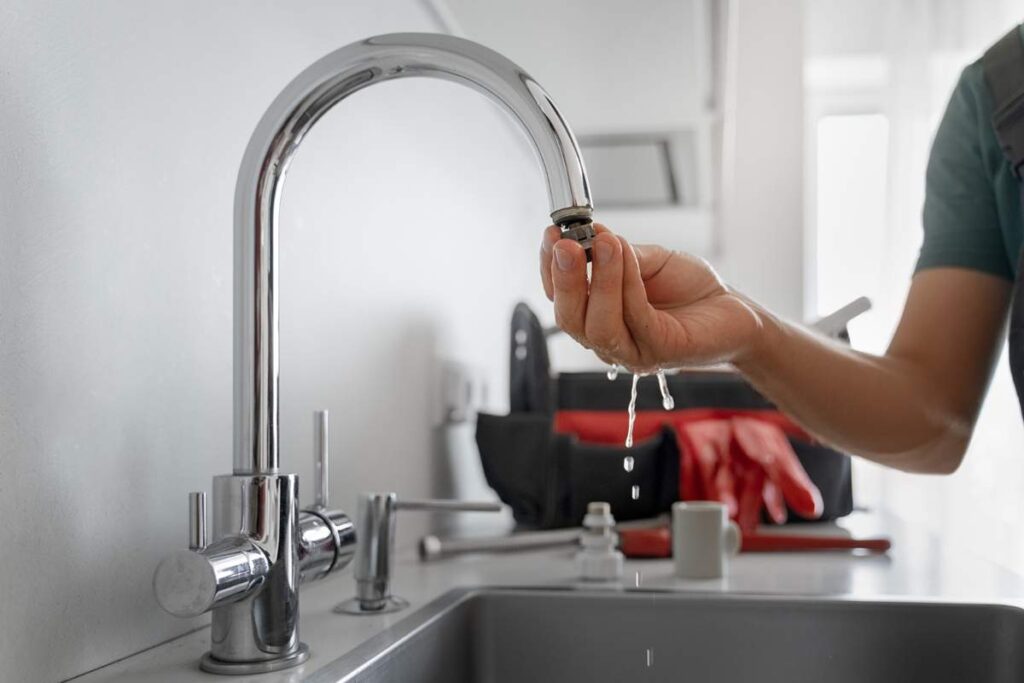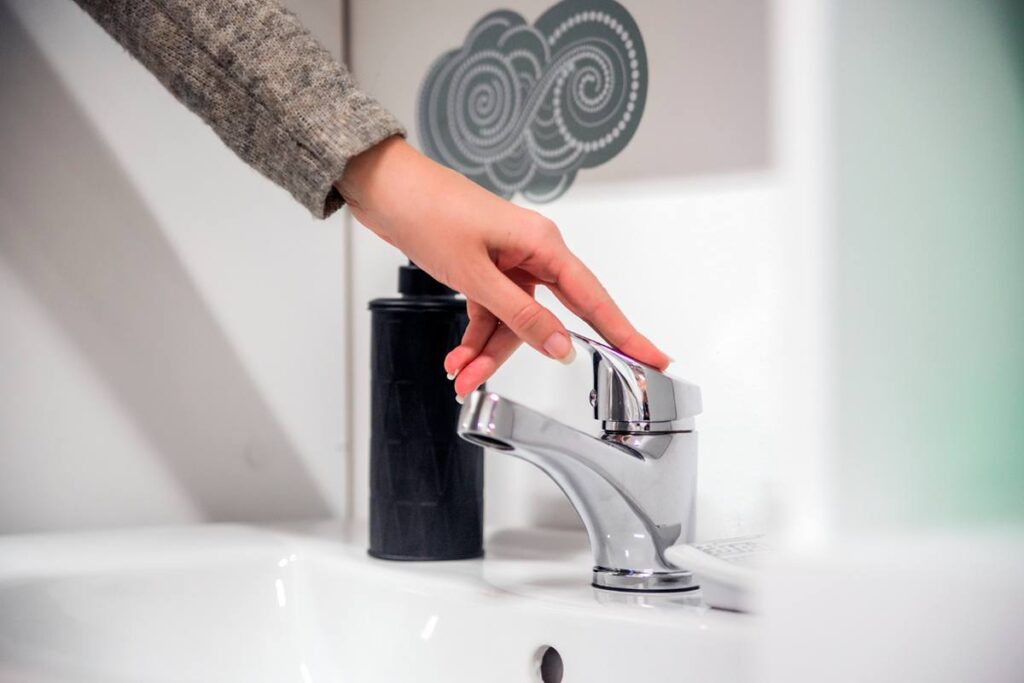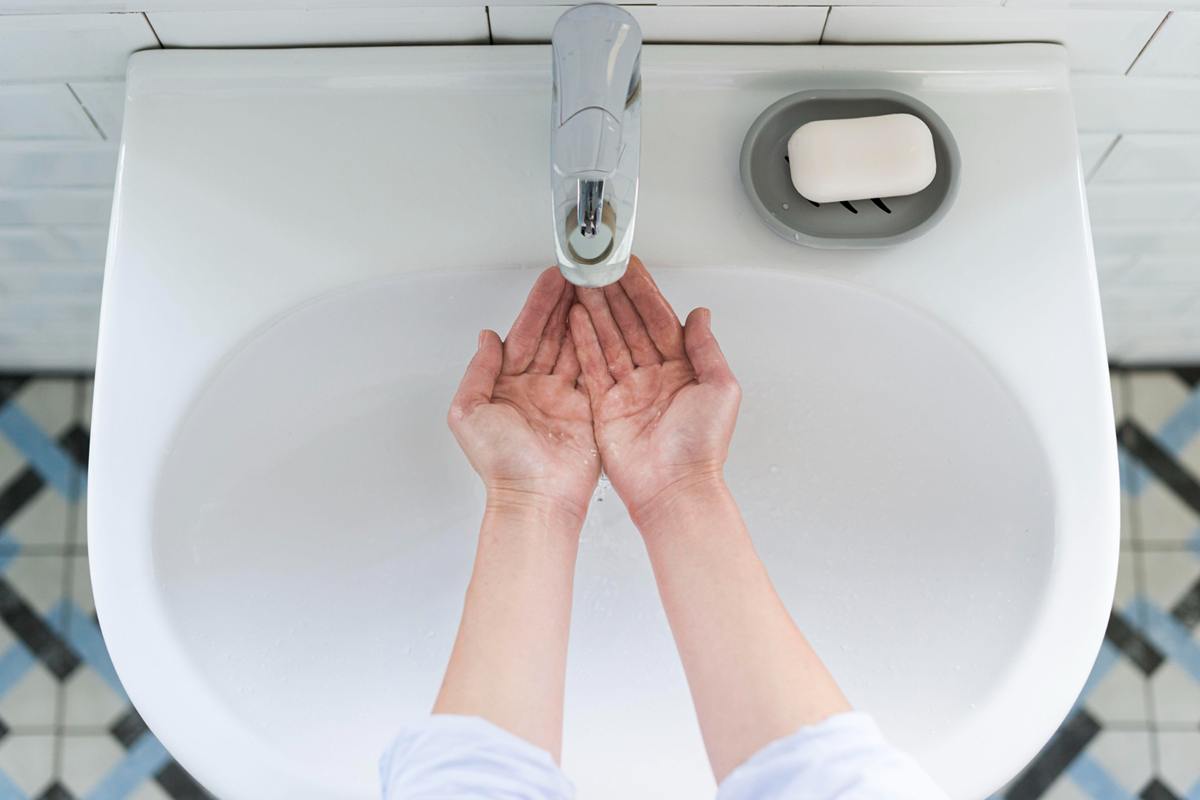What must a hand sink have to keep people safe and healthy? In places like restaurants, schools, food trucks, and hospitals, clean hands save lives. That’s why every hand sink must meet certain health rules. These rules make sure employees wash their hands the right way—using soap, clean water, and paper towels. If a hand sink is missing just one of these things, it can cause serious health problems and even lead to business fines or closure. In this article, we’ll explain everything a hand sink must have to follow 2025 safety rules and protect everyone.
What Must a Hand Sink Have?
A hand sink is more than just a place to rinse your hands. In food service, healthcare, and childcare environments, it’s a critical part of keeping everyone safe from germs. To meet health department rules and avoid costly fines, your hand sink must include specific items and follow strict setup standards.
Essential Items Every Hand Sink Must Include
To follow safety laws and pass inspections, every hand sink must have these items:
| Item | Why It’s Important |
| Soap (liquid or foam) | Helps remove dirt, grease, and germs from hands. Bar soap is not allowed in public settings. |
| Warm running water | Must be at least 100°F (38°C) so soap can work effectively and wash away bacteria. |
| Paper towels or air dryer | Needed to dry hands completely—wet hands spread germs faster than dry ones. |
| Waste bin | A trash can should be placed next to the sink to dispose of used paper towels easily. |
| “Hand Washing Only” sign | Tells workers the sink is for handwashing only, not for cleaning food or equipment. |
Why a Hand Sink Must Be Labeled for Handwashing Only
Many people don’t realize that labeling a sink is just as important as installing it. Here’s why a “Hand Washing Only” sign is required:
- Prevents Cross-Contamination:
If workers use the same sink to wash dishes or rinse raw food, bacteria can spread. A labeled sink tells everyone it’s just for hands—nothing else. - Avoids Health Code Violations:
Health inspectors look for clear labels. Without one, your business could get written up or even shut down. - Improves Workplace Habits:
Signs are reminders. When workers see the label, they’re more likely to follow proper handwashing steps.
What Must a Hand Sink Have in Food Handler Areas?
In places where food is cooked, served, or packed—like restaurants and food trucks—hand sinks must follow special rules. These sinks help food workers wash away germs before touching anything people will eat. That’s why their setup is so important.
Key Rules for Hand Sinks in Food Handler Areas
For a hand sink to be safe and legal in a food handler area, it must:
- Be located close to where food is made or served
Workers shouldn’t walk far to wash their hands. The sink must be nearby and easy to reach. - Stay clear and accessible at all times
No boxes, trash bins, or cleaning tools should block the sink. If workers can’t reach it quickly, they might skip washing their hands. - Not be shared with dishwashing or cleaning
Using the same sink for dirty dishes or mops spreads bacteria. Hand sinks should be used for hands only.
Real-Life Examples
- Restaurant Kitchen
A hand sink should be placed between the cooking station and the prep table, with soap and paper towels ready. - Food Truck
Because space is tight, the hand sink must be installed near the cooking area—not used for storage or cleaning tools. - School Cafeteria
Hand sinks should be outside the food line or near the serving area where lunch staff can wash up easily.
Do You Need a Cloth Towel to Dry Your Hands?

Some people might think it’s okay to use a cloth towel at a hand sink, but that’s not true in places like restaurants or cafeterias. When it comes to what must a hand sink have, using the right method to dry hands is just as important as washing them.
Why Cloth Towels Are Not Allowed
Using cloth towels may seem eco-friendly, but in public and food-handling areas, they are not safe.
Risk of Spreading Germs
When more than one person uses the same towel, it can pass bacteria from one person to another, even if their hands look clean.
Against Most Health Codes
Almost all state and local health departments ban cloth towels in commercial handwashing areas. They’re considered unsanitary.
Difficult to Monitor and Keep Clean
It’s hard to know when a towel is too dirty to use. That’s why disposable or automatic drying options are required.
What Should Be Used Instead
Here’s what you must use at a hand sink:
- Paper Towels (Disposable)
These are single-use, so germs go straight into the trash after drying. Make sure to place a waste bin near the sink for easy disposal. - Air Dryers (Touch-Free)
These are great in busy places like malls or airports. Since you don’t touch anything, they help avoid spreading germs.
How Must You Avoid Bare Hand Contact With Food?
When preparing or serving food, it’s important to keep it safe from germs. One big rule connected to what must a hand sink have is also about how workers handle food—never with bare hands.
Touching food with unwashed hands can make people sick. That’s why health departments have clear rules.
Safe Ways to Avoid Bare Hand Contact
To keep food clean and customers safe, food workers must always use tools or barriers, like:
- Gloves (disposable, single-use)
- Tongs or serving utensils
- Wax paper or deli tissue
What the FDA Food Code Says
According to the FDA Food Code, bare hand contact with ready-to-eat foods is not allowed unless the local health authority approves it—and even then, strong safety controls must be in place.
- Bare hands are never allowed when touching food that won’t be cooked again (like salads, sandwiches, or fruit).
- Use gloves, tools, or papers as a barrier.
- Wash hands at a properly equipped hand sink with soap, warm water, and paper towels.
What Is the First Thing You Must Do When Washing Your Hands?
Good handwashing starts with the right steps—and using a proper hand sink that has everything you need. When we ask what must a hand sink have, the answer includes more than just soap and water—it’s also about how hands are cleaned the right way.
Why Warm Water First?
Warm water (at least 100°F or 38°C) helps remove grease and dirt better than cold water. Once your hands are wet, soap works more effectively.
Pro Tip: Always wet your hands before applying soap. This helps the soap spread and lather better.
The 20-Second Rule
You should scrub your hands for 20 seconds—long enough to sing the “Happy Birthday” song twice. This removes germs from your palms, fingers, and nails.
Handwashing Steps (In Order)
Here’s how to wash your hands the right way at a food-safe hand sink:
- Wet your hands with warm running water.
- Apply soap (liquid or foam is best).
- Scrub all over your hands—between fingers, under nails, and the back of your hands—for at least 20 seconds.
- Rinse well with clean water.
- Dry hands with a paper towel or use a touch-free air dryer.
Where Should Hand Sinks Be Located?
When thinking about what must a hand sink have, it’s just as important to know where hand sinks should be placed. Location plays a big role in making sure food workers follow hygiene regulations and maintain food safety compliance.
Near Food Prep Stations
Hand sinks must be placed close to where food is prepared. This helps workers wash their hands quickly and often—especially after touching raw meat, trash, or cleaning tools.
Outside Restrooms
There should always be a hand sink right outside the restroom. This ensures that everyone—from workers to customers—can wash their hands before re-entering food areas.
Inside Dishwashing Areas (But Not Shared)
In dishwashing zones, a separate handwashing sink must be installed. Workers should not use dish sinks to wash their hands—this is against most hygiene regulations.
Never share a hand sink with mop cleaning or dishwashing activities. It causes cross-contamination and fails food safety compliance checks.
What Happens If a Hand Sink Doesn’t Meet These Rules?

Failing to follow the rules for what must a hand sink have can lead to serious trouble. A handwashing sink isn’t just a nice thing to have—it’s a legal and safety requirement in places where food is handled.
Possible Health Code Violations
If your hand sink is missing essentials like soap, warm water, or paper towels, health inspectors can issue violations. These violations often come with points that affect your inspection grade, which can scare away customers.
Risk of Foodborne Illness
Dirty hands can spread bacteria like E. coli or salmonella. Without a proper handwashing station, there’s a greater chance that food gets contaminated, putting people at risk of getting sick.
Remember: One simple mistake—like no soap or using a hand sink for dishes—can cause a serious health hazard.
Business May Face Fines or Closure
Health departments can fine businesses or even shut them down if they don’t fix the problems quickly. Repeat violations show that the business doesn’t take food safety compliance seriously.
Real-Life Example (Fictional Case Study)
In 2024, “Sunny Side Café” in Pittsburgh was fined $2,000 during a surprise inspection. The inspector found that the hand sink in the food prep area had no soap, no “handwashing only” sign, and was being used to thaw chicken. Within 3 days, the restaurant had to close temporarily and retrain all staff on hygiene rules. Customers lost trust, and the café’s online reviews dropped overnight.
How to Make Sure Your Hand Sink Meets 2025 Requirements
To follow the latest hygiene regulations and avoid penalties, you need to keep your hand sink setup up to date. Here’s how to stay compliant with what must a hand sink have in 2025:
Regular Inspections
Check all hand sinks daily to make sure they’re clean, working, and fully stocked. Look for:
- Running warm water (at least 100°F / 38°C)
- Soap dispensers that are not empty
- Paper towels or functioning air dryers
- A visible “Handwashing Only” sign
Keep Supplies Stocked
Running out of soap or paper towels? That’s an automatic health code violation. Use a checklist to track supply levels and refill as needed.
- Refill soap and towels every shift
- Keep a backup supply nearby
- Use sealed, sanitary containers for replacement items
Train All Staff (Especially New Hires)
Even one untrained employee can lead to a violation. Teach every team member:
- Proper handwashing steps
- Where each hand sink is located
- What can and cannot be done at a handwashing sink
Post Handwashing Signs
A sign helps remind staff to wash hands and shows inspectors you take hygiene seriously. Make sure signs are:
- Easy to read
- Placed directly above or next to the sink
- Not damaged or missing
Use Motion Sensor Faucets If Possible
Touchless faucets reduce the spread of germs and improve hygiene. Many modern health codes now recommend or even require them.
Conclusion
In summary, what must a hand sink have is more than just a basic sink for washing hands. A compliant hand sink must include soap (liquid or foam), warm running water, paper towels or air dryers, a waste bin for towel disposal, and a clearly visible “Handwashing Only” sign. These items are not optional—they are required by health and food safety regulations.
Food business owners and staff, it’s time to check your hand sinks today. Make sure they’re fully stocked, easily accessible, and properly labeled. Keeping up with these simple rules will ensure a safe and hygienic environment for both your customers and staff.










